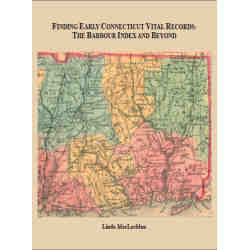
Among the valuable features readers will find in Dr. David Dobson’s new book, Scottish Genealogy: The Basics and Beyond, is a chapter devoted to Scottish emigration. Since the author is the foremost authority on the subject, researchers can bank on what he has to say about the Scottish diaspora that proceeded, primarily, from the 17th through the 19th-century. Each section in this chapter—and Dobson follows Scots from their native land to every corner of the globe—includes a chronological overview of the dispersion followed by an up-to-date bibliography on a particular phase of the emigration. To illustrate, here is Dr. Dobson’s description of Scottish emigration to the West Indies.
SCOTS IN THE WEST INDIES
Scotland has had direct social and economic links with the West Indies for around four hundred years, from the time when Spanish power there began to wane. The first vessel known to have sailed from Scotland to the Caribbean was the Janet of Leith, which left in 1611. Settlement by Scots began when Scot James Kay, Earl of Carlisle, was appointed Proprietor of Barbados in 1626, which led to a handful of Scots settling there. The English spread from Barbados along the chain of islands known as the Leewards and the Windwards, and in 1655 they took Jamaica from Spanish control. Settlers and servants were in great demand, which was partly met by indentured servants, including some Scots, being shipped to the colonies in the West Indies. However, the majority of Scots in the Caribbean at that time were transportees banished there. These included prisoners of war sent by Oliver Cromwell, Covenanters considered as rebels, and criminals taken from the jails of Edinburgh. There were also some of the survivors of the disastrous Darien Scheme and a small number of migrants from Edinburgh and Glasgow. Therefore, during the seventeenth century small numbers of Scots could be found in the English and Dutch colonies in the Caribbean. Those in the Dutch islands were probably two-stage migrants, who had initially settled in the Netherlands.
After the union of Scotland and England in 1707, all restrictions on trade between Scotland and the English colonies were lifted. This led to a significant expansion of Scottish trade in the West Indies, and settlement there by Scots increased. In 1763 the French ceded many of their Caribbean islands to Great Britain, including Dominica, Grenada, Tobago, and St. Vincent. Soon families in Scotland and elsewhere in the British Isles were investing in plantations in these islands, bringing in skilled agricultural overseers, millwrights, and surgeons. The planters grew sugar cane, cotton, and tobacco; they also produced rum, which was shipped to Britain for processing and then sold in European markets. Trading links were also established with American ports, which in turn led to families migrating between the mainland and the islands. The main Scottish burgh to benefit from these economic links was Glasgow, though others participated. The actual number of Scots who moved to the Caribbean is difficult to assess. Some were transients, only there temporarily, who after making their fortunes returned to Scotland. Some died prematurely due to disease and the climate, others settled there permanently.
Publications. Soujourners in the Sun: Scottish Migrants in Jamaica and the Chesapeake, 1740-1800 (A. L. Karras, Ithaca, 1992); Scotland’s Empire, 1600-1815 (T. M. Devine, London, 2003); Scotland, the Caribbean and the Atlantic World, 1750-1820 (D. J. Hamilton, Manchester, 2005); Scotland, Darien and the Atlantic World, 1698-1700 (J. Orr, Edinburgh, 2018); Barbados and Scotland, Links 1627-1877 (David Dobson, Baltimore, 2005); Scots in Jamaica, 1655-1855 (David Dobson, Baltimore, 2011); Scots in the West Indies, 1707-1857, two volumes (David Dobson, Baltimore, 1998, 2006); The Original Scots Colonists of Early America: Caribbean Supplement, 1611-1707 (David Dobson, Baltimore, 1999).





I’m researching Scottish settlers in Dominica in the late 1800’s
I believe none of our books cover Dominica at that period of time; however, if you call the FamilySearch Library in Salt Lake City and ask to speak with the Dominica specialist there, that person may be able to help.